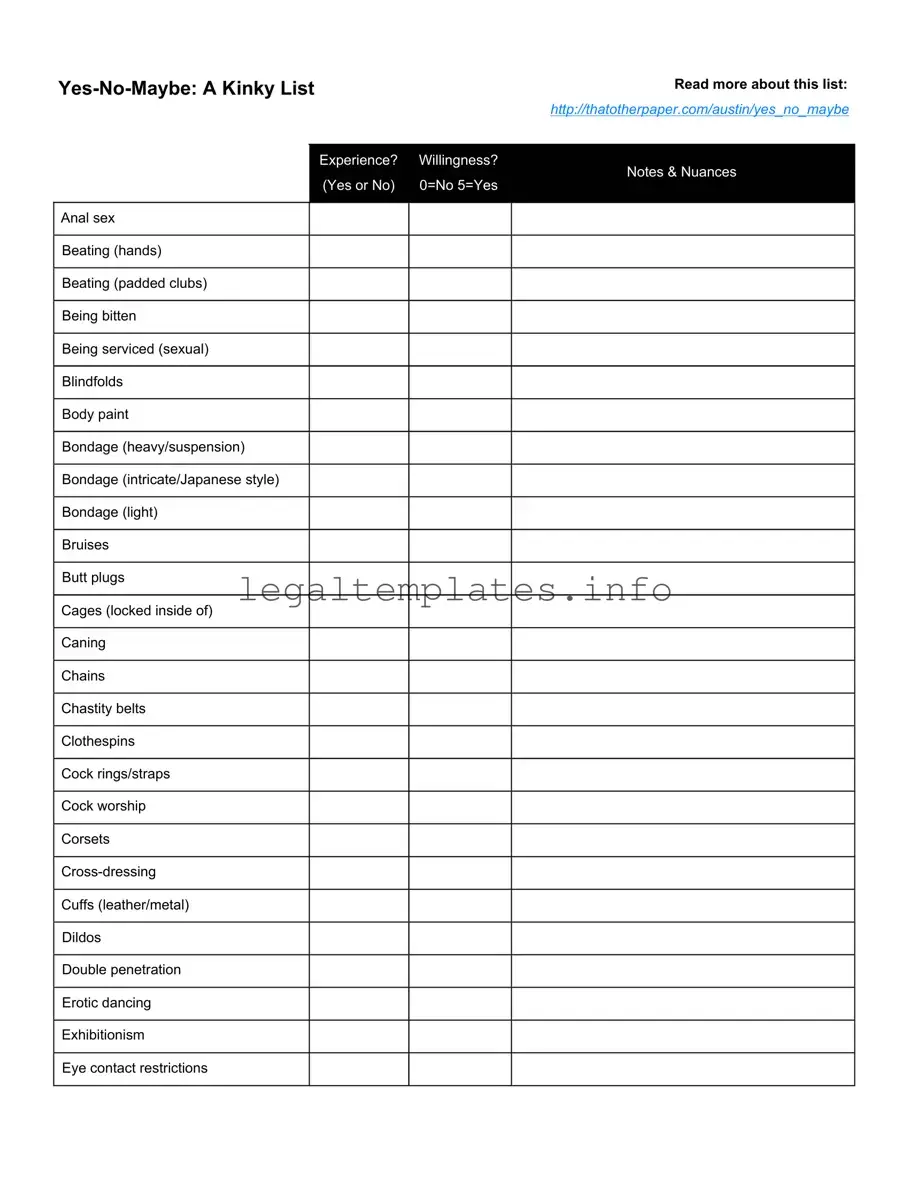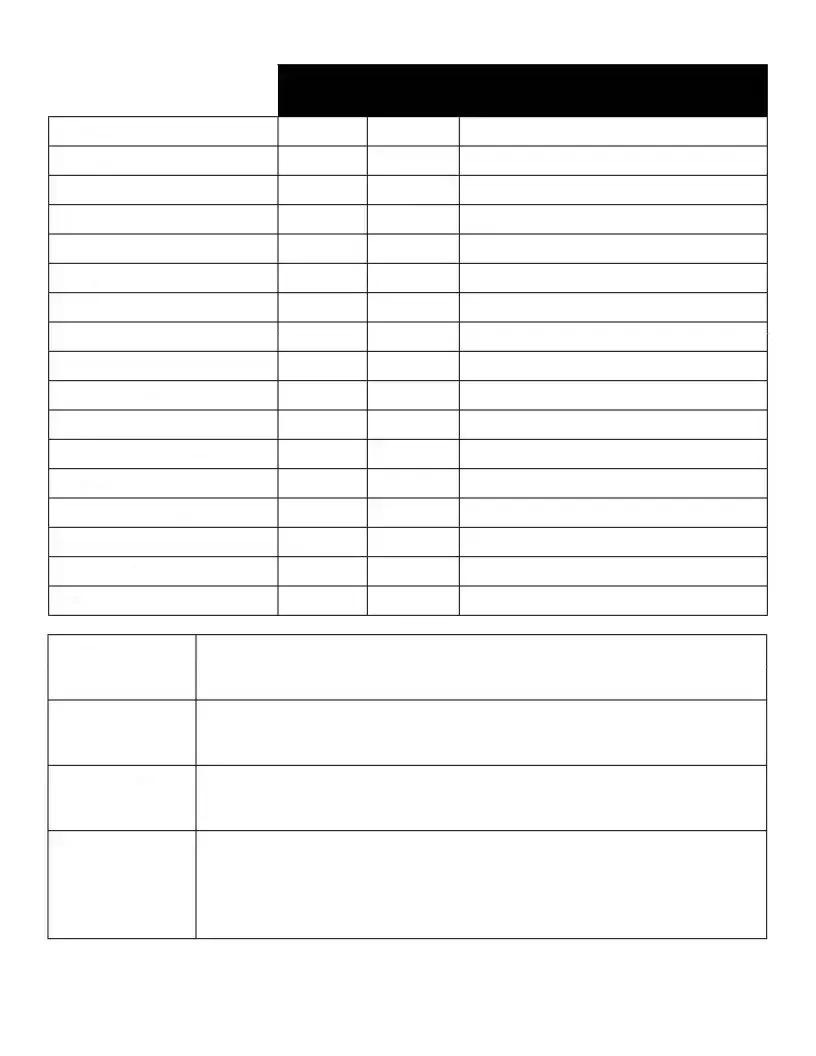What is a Yes No Maybe List?
A Yes No Maybe List is a tool often used by individuals or partners exploring their sexual boundaries, interests, and comfort levels. It contains a wide range of activities, from the vanilla to the kinky, and provides a format to categorize each according to personal preference: "Yes" for activities you're into, "No" for those you aren't, and "Maybe" for everything in between or that requires certain conditions to be met.
How do I use the Yes No Maybe List?
To use the list, simply go through each item and decide if it’s something you feel a definite "Yes" or "No" about, or if it falls under "Maybe." For items you're unsure about, you can add notes and nuances to clarify under what conditions they might change categories. It’s a great exercise to do as an individual to understand your own preferences or with a partner to communicate and explore boundaries in a safe, structured way.
Can the Yes No Maybe List enhance my relationship?
Absolutely! The list encourages open and honest communication between partners, helping you to explore new activities you might be hesitant to bring up otherwise. It fosters a deeper understanding of each other’s desires and boundaries, potentially enhancing intimacy and trust. This exploration can lead to a more fulfilling sexual relationship where both partners feel heard and valued.
What should I do if my partner and I have different answers?
Differences in comfort levels and interests are common and completely normal. If you find discrepancies between your answers and your partner's, view it as an opportunity for discussion rather than a roadblock. Communicate openly about each other's perspectives and feelings, and negotiate boundaries that respect both of your comfort levels. Sometimes, a "No" can turn into a "Maybe" or even a "Yes" with the right communication and trust-building.
Is it okay to change my mind after completing the list?
Yes, it is perfectly fine—and expected—that your preferences might change over time. The Yes No Maybe List isn't set in stone; it’s a living document that can evolve with your experiences, attitudes, and relationship dynamics. Feel free to revisit and revise your list as often as needed to reflect your current feelings and desires.
How often should the Yes No Maybe List be updated?
Updating your list should be based on your personal growth and changes in your relationship. Some might find it beneficial to review it regularly, such as every few months or after trying out new experiences. However, the most important cue for an update should be any change in your feelings or circumstances. Checking in with each other and providing space for open dialogue will naturally prompt updates as needed.




